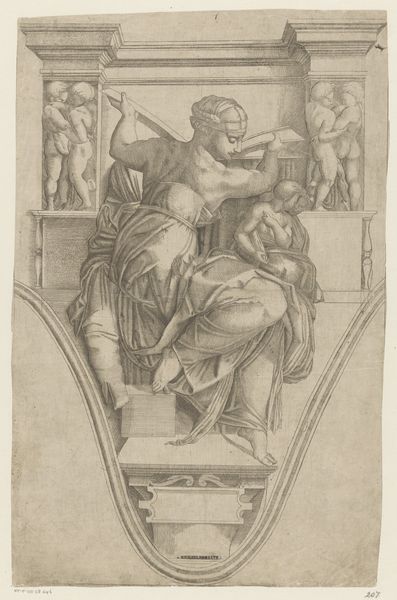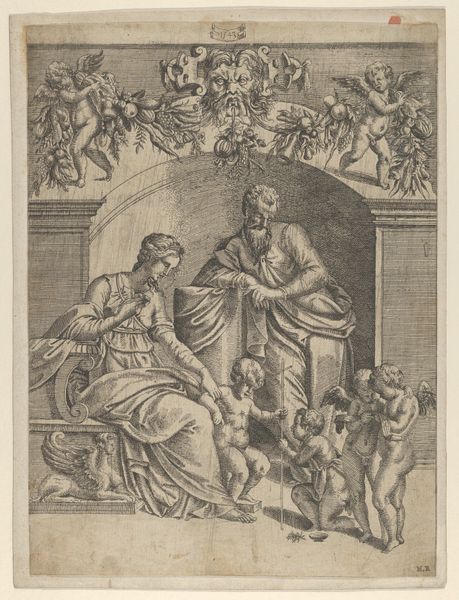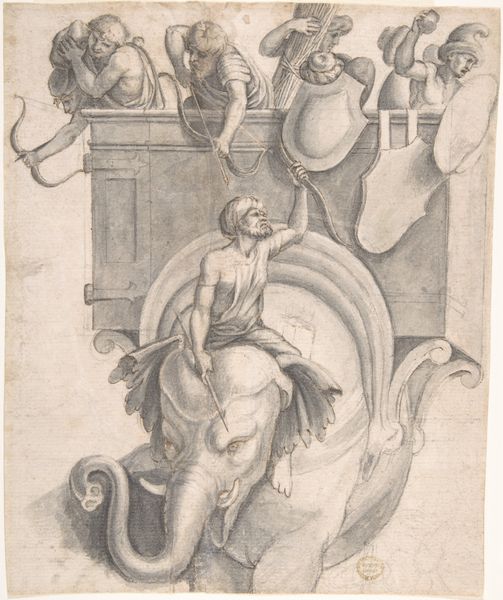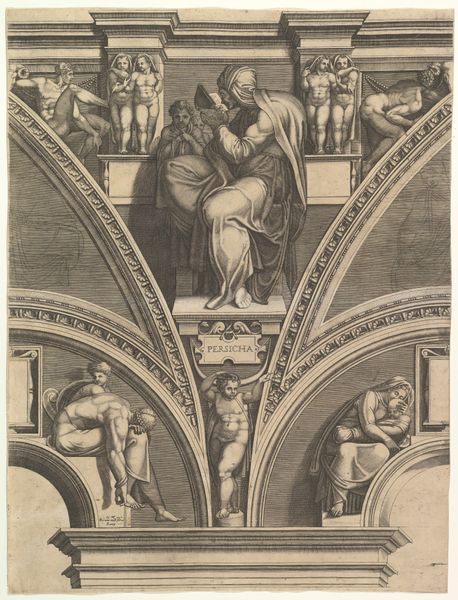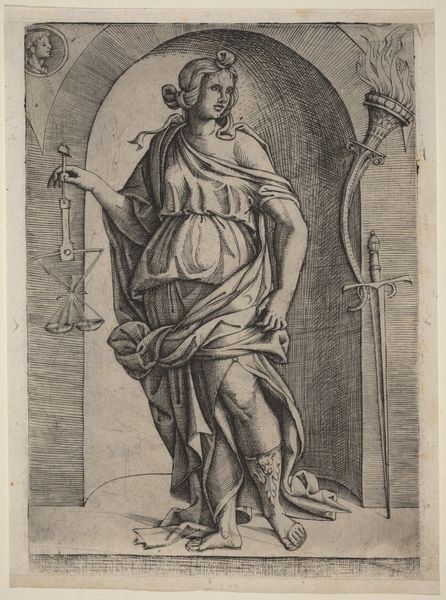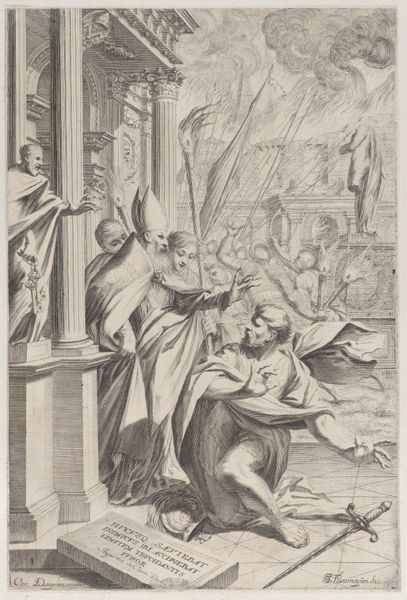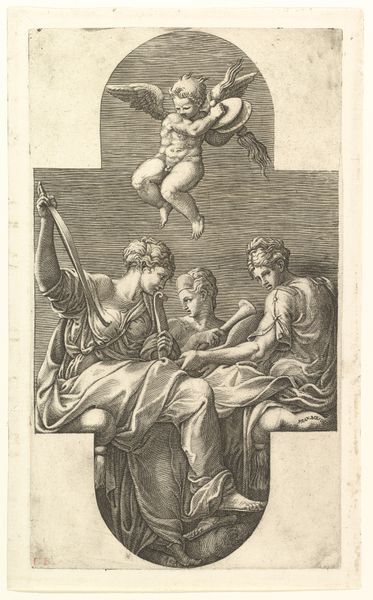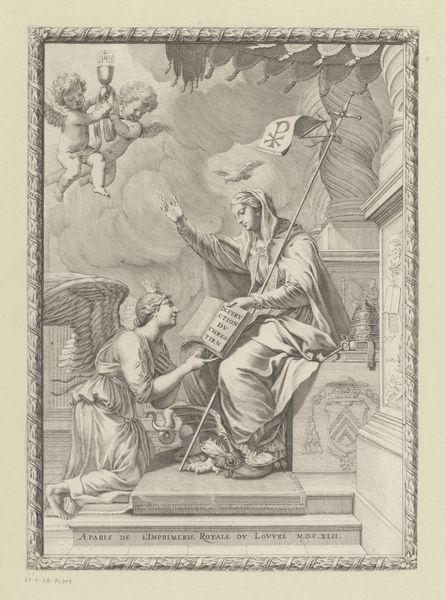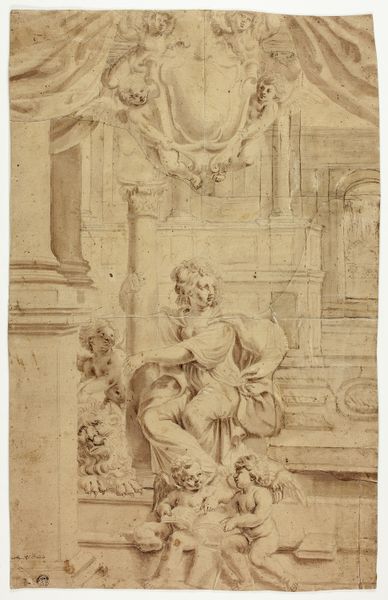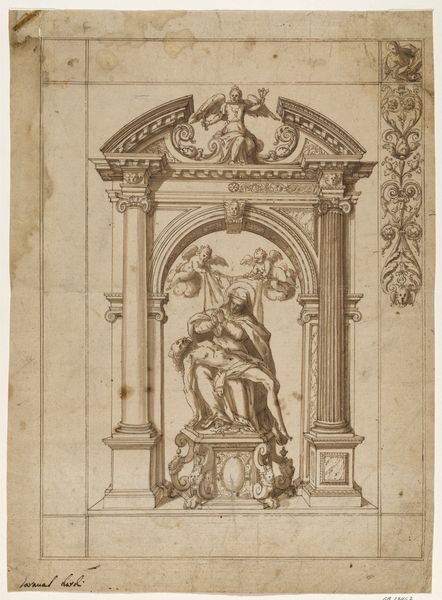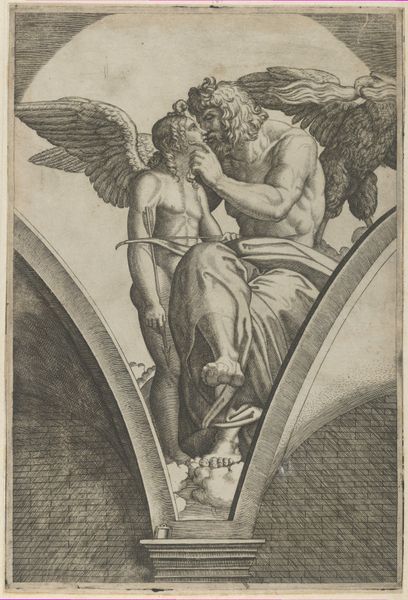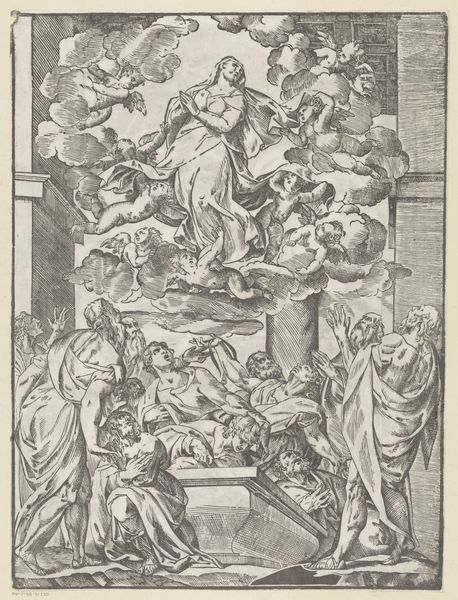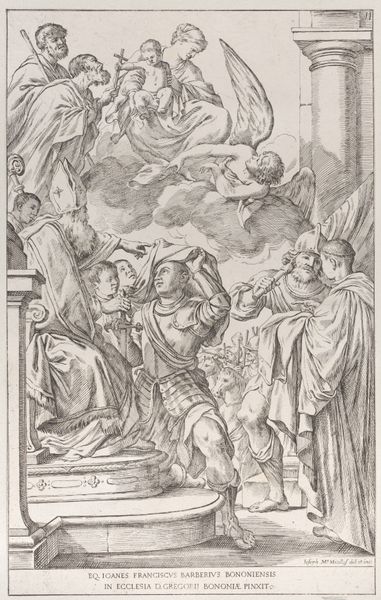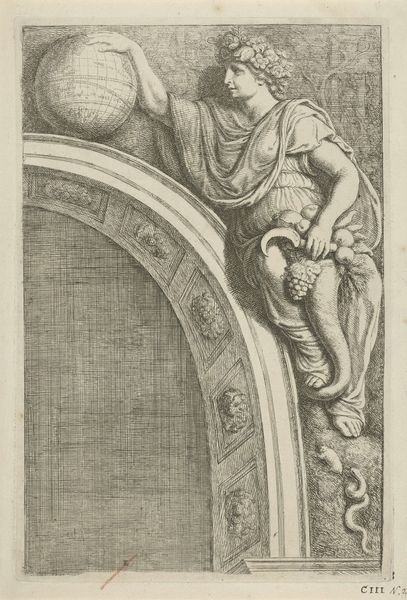
print, engraving
#
portrait
# print
#
figuration
#
11_renaissance
#
history-painting
#
italian-renaissance
#
engraving
Dimensions: height 341 mm, width 294 mm
Copyright: Rijks Museum: Open Domain
Enea Vico created this engraving of the Prophet Isaiah sometime in the mid-16th century. It's made using a process called intaglio, where lines are incised into a metal plate, then filled with ink and printed. The material itself, copper, has a smooth surface that allows for incredibly fine detail. Look closely at the hatching and cross-hatching, the thousands of tiny lines that build up the shadows and forms. The way this plate was worked demonstrates enormous skill and control, manipulating light and dark with impressive precision. Engraving was a key technology in early modern Europe, allowing for the mass production of images. This print, like others of its kind, could circulate widely, carrying ideas and artistic styles across borders. By understanding the material and making of this work, we can appreciate its role in shaping visual culture at the time. It really underscores the importance of craft in the broader sweep of art history.
Comments
No comments
Be the first to comment and join the conversation on the ultimate creative platform.
